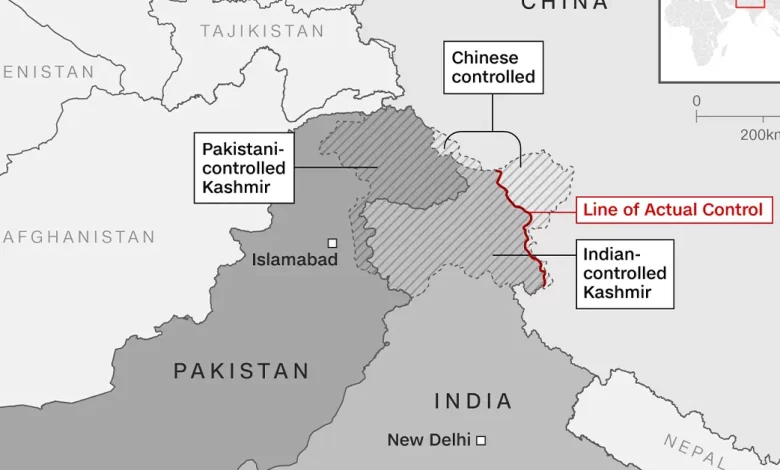Daily Current Affairs for UPSC
Line of Actual Control (LAC)
Syllabus- International Relations (GS Paper-2)

Context- Chinese nationals have recently started occupying many model “Xiaokang” border defence villages across India’s north-eastern borders which the country has been building along the LAC since 2019.
About Line of Actual Control (LAC)
- The LAC is the demarcation that separates Indian-controlled territory from Chinese-controlled territory.
- The LAC is only a concept not agreed upon through the two countries, neither delineated on a map or demarcated at the floor.
- India considers the LAC to be three,488 km long, at the same time as the Chinese consider it to be only 2,000 km.
- It is split into three sectors: the eastern sector which spans Arunachal Pradesh and Sikkim, the middle sector in Uttarakhand and Himachal Pradesh, and the western region in Ladakh.
- India’s claim line is the line seen in the official boundary marked on the maps as released via the Survey of India, inclusive of both Aksai Chin and Gilgit-Baltistan.
- This method LAC isn’t always the claim line for India.
- In China’s case, LAC is the claim line in the eastern region, in which it claims the entire Arunachal Pradesh as South Tibet.
Disagreement over the LAC and Why these Claim Lines Controversial in Ladakh
- India rejects the concept of LAC, as it is the line China has created.
- The Chinese line was a disconnected series of points on a map that could be joined up in many approaches.
- The line should pass over gains from aggression in 1962 and therefore have to be based totally on the actual role on September eight, 1962 earlier than the Chinese assault.
- This vagueness of the Chinese definition left it opens for China to keep its creeping attempt to alternate facts at the floor by navy force. For example, the conflict inside the Galwan valley between the Indian Army and China’s PLA in 2020.
- Aksai Chin in Ladakh province of the princely state of J&K become now not a part of British India, even though it was part of the British Empire.
- Thus, the eastern boundary changed into properly defined in 1914 (whilst the Shimla Agreement at the McMahon Line changed into signed with the aid of British India) but inside the west in Ladakh, it become no longer.
- These maps, as is officially used until date, shaped the premise of dealings with China, in the end leading to the 1962 War.
- Recent Developments at the LAC:
- In the last few months, the Chinese nationals have commenced occupying multiple vacant defence villages built on its facet of the LAC across from Lohit Valley and the Tawang area of Arunachal Pradesh.
- China has been constructing 628 such “properly-off villages” alongside India’s borders with the Tibet Autonomous Region, along with Ladakh and Arunachal Pradesh for over five years now.
- While the exact nature of those villages is doubtful, the dwellings are understood to be “twin-use infrastructure” – for each civil and army functions, and visible as a Chinese statement of its territorial claims alongside the LAC.
Infrastructure Development on the LAC
- The Chinese have consistently stepped forward their existing infrastructure (along the LAC) consisting of enhancing their connectivity through passes, building roads and bridges and their model villages.
- China has also been building infrastructure, which includes border villages, in Bhutanese territory.
- In the remaining three to 4 years, India has also stepped-up work on its border infrastructure – this consists of enhancing ahead connectivity, constructing exchange routes to the LAC in addition to connecting them.
- Under the Vibrant Villages programmes, India plans to increase 663 border villages into modern villages with all amenities in the first section.
- Of them, at least 17 along the borders with China in Ladakh, Himachal Pradesh, Uttarakhand, Sikkim and Arunachal Pradesh, were decided on for improvement as a pilot mission under the programme.
- Also, 3 predominant highways are at extraordinary ranges of creation in Arunachal Pradesh: the Trans-Arunachal Highway; the Frontier Highway; and the East-West Industrial Corridor Highway.
Source: Indian Express





.png)



